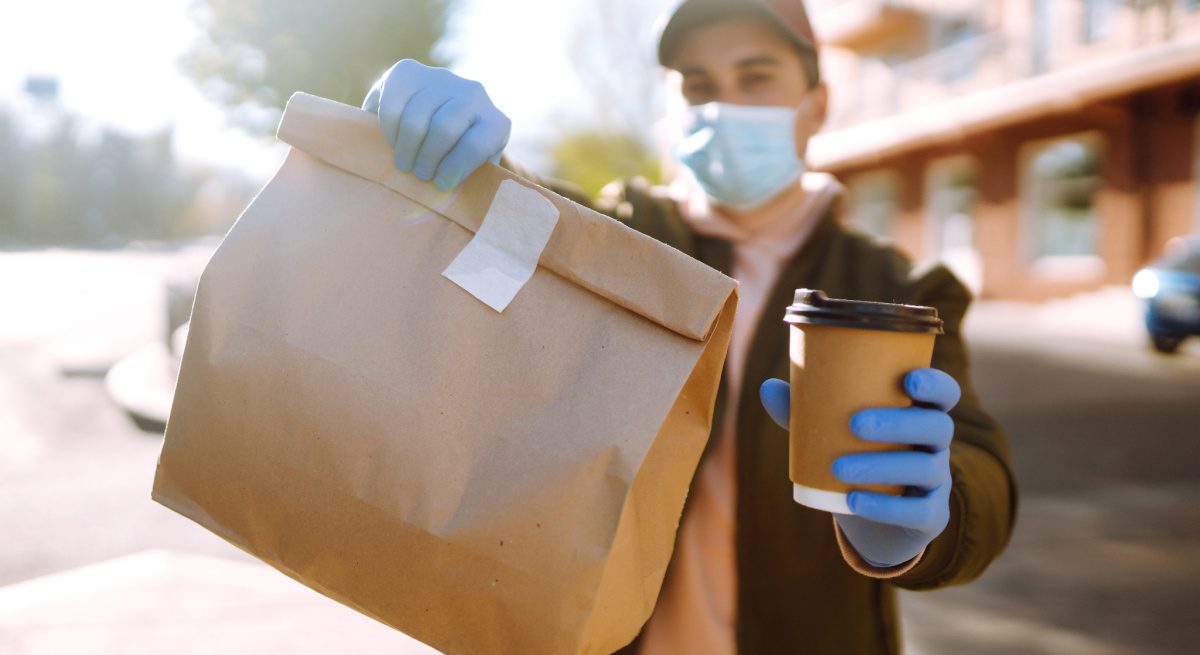Viable Restaurant Strategies for Handling the Third-Party Paradox
5 Min Read By Bruno Guicardi
The cost of partnering with third-party food delivery services can be high, but the cost of not doing so could be even higher.
Even before the pandemic, this insight was fast-spreading as small, mid-size, and large restaurant chains alike did their best to keep up with the trend, accessing the customers that companies such as DoorDash, Grubhub, and Uber Eats had made available. COVID-19, however, put change into hyperdrive.
Two key factors are driving the problem for restaurateurs: the first is the fact that delivery has become more than just another sales channel. It has become a lifeline for many restaurants that have been forced to close their doors or limit on-premise tickets during lockdown measures.
Realistically, for some, abandoning the delivery segment would be tantamount to shutting down completely. The second part of the problem — where it becomes paradoxical — lies with the high service and subscription fees that third-party companies charge, which can be as much as 30 percent of the final amount charged to customers.
On top of the direct costs, there are additional challenges to working with third-party companies. Depending on what kind of hardware and POS system a restaurant is using, each delivery app may require a unique and intensive process to integrate it with current operations. And that’s a “necessary evil” for accessing each one’s loyal customers.
Additionally, the customer experience of services like DoorDash is heavily tailored for end-users — but not necessarily as well-developed for restaurants themselves; managing the services can be difficult, although that’s getting better.
Another issue with third-party providers is that most of them aren’t interested in sharing customers’ data with restaurants beyond the bare minimum. Anyone who runs a restaurant knows this is valuable data, so being cut off from it represents a significant loss. Finally, there’s no guarantee that third-party companies will understand your business model, as was the case for Sean Hagler and his 13-hour brisket.
Three Ways to Handle the High Costs of Delivery
Of course, restaurateurs are creatives at heart, and they’re finding ways to navigate this budding foodservice ecosystem. Many successful solutions are being implemented. Here are three things restaurants can do:
1. Fine-tune
Naturally, there’s a limit to the size of dent that internal tweaking can make. Marginal cost reductions are meaningful, but for restaurants that are trigger-shy when it comes to bigger, more comprehensive solutions, there has to be a multi-faceted approach.
Off-premise orders can be tied to limited menus that are filled with more profitable items. Namely, products that the restaurant can reasonably afford to take a 20 or 30% hit on. The point isn’t just to keep a higher percentage but also to curtail operational expenses. To that end, IHOP’s menu went from 12 pages to two, Dave & Buster’s from 40 items to 15, and even McDonald’s transitioned to limited offerings during certain stages of the pandemic.
Also, remember those pesky POS integrations that sometimes necessitate having a separate tablet or device for every delivery app? Finding a way to streamline in this department can impact the bottom line by freeing up time and hardware costs. Look for available solutions, that optimize sales and allow operators and employees to focus their effort and energy where it’s needed most. That being said, these services aren’t free, so it’s crucial to carefully weigh the costs and benefits.
2. Unite to Build Your Own Scale
Snubbing the big third-party apps and creating your own system for delivery and takeout is always an option. In fact, prior to 2020, customers indicated a strong preference for deliveries being handled by the restaurants themselves. There’s not much reason to suspect that has changed, but the question has turned from one of preference to one of feasibility. Compared to 2019, many additional restaurants have an off-premise segment, and not all of them have had a chance to create their own delivery setup. Even restaurants with preexisting in-house delivery may not have been equipped to handle the increase in order volume that came along with the pandemic.
The critical factor, operators should know, is scalability. A delivery app for every restaurant just isn’t possible; even if customers were willing to download one for every restaurant they ordered from, it would still not be profitable for most businesses.
What customers will do is use an app that accommodates all (or many) of the restaurants in a particular area. If restaurants unite in location-based groups to implement a region-wide or city-wide delivery system, it may be enough to make customers reconsider what they use as their go-to delivery app.
There are plenty of concerns that come along with setting up in-house delivery. Vehicles, drivers, fuel costs, insurance, payment methods, dedicated prep staff, packaging, storage, tracking, and communication all present challenges. They’re not insurmountable, though, and banding together can help solve these as well.
If bucking off the big industry players sounds like a difficult task, consider that it’s already been done in other contexts. Austin, Texas, for example, implemented its own driver’s association and app (it charges a flat $1 fee from drivers instead of the 30% that the major ride-hailing companies charge). In doing so, it was able to cut Uber and Lyft totally out of the local economy.
3. Go Fully Digital
By now, the ghost kitchen phenomenon has been extensively covered, and admittedly, it may not appeal to some traditional restaurateurs. For many others, though, it represents a logical step in the path that food service is taking toward total digital transformation. Opinions aside, ghost kitchens and virtual brands are the only way forward for a number of businesses. While large chains may see digital as simply another sales channel, independent operators are clinging to it to survive.
Ironically, the viability of the “locationless” restaurant model can be viewed through the lens of DoorDash’s store, Burma Bites. Co-created with Burma Inc., it’s relatively simple to execute. Most of the major requirements — a menu optimized for transportation, a payment mode, a delivery method, inventory control, staffing, and regulatory compliance — are things that existing restaurants are already dealing with. What’s left is to find an ideal kitchen location and promote that new segment.
For many restaurants, simply fulfilling orders and staying alive is representative of success in the current circumstances. And yet, against the odds, there is opportunity to grow and expand in the face of the industry’s challenges. The cost associated with third-party delivery is one of those challenges. While companies like DoorDash could be seen as impeding or even taking advantage, it would be just as fair to see them as catalysts, helping restaurants move in even more profitable directions.
As for the exact steps taken to get there — whether it’s going fully digital a la ghost kitchens and virtual brands or adapting operations to suit the new digital climate — the right choice depends entirely on the unique needs and positions of individual businesses. The only wrong choice, meanwhile, would be to give up.


